Fence Cost Estimator
Installing a fence is a great way to enhance your property’s privacy, security, and aesthetic appeal. Whether you’re looking to add a simple boundary for your backyard or a more elaborate design to complement your home’s architecture, understanding the costs involved is essential for budgeting and planning. This guide provides a comprehensive overview of the factors that influence fence installation costs and includes a detailed cost estimator to help you plan your project effectively. By accurately estimating the costs, you can avoid unexpected expenses and ensure that your fencing project is completed within budget and on time.
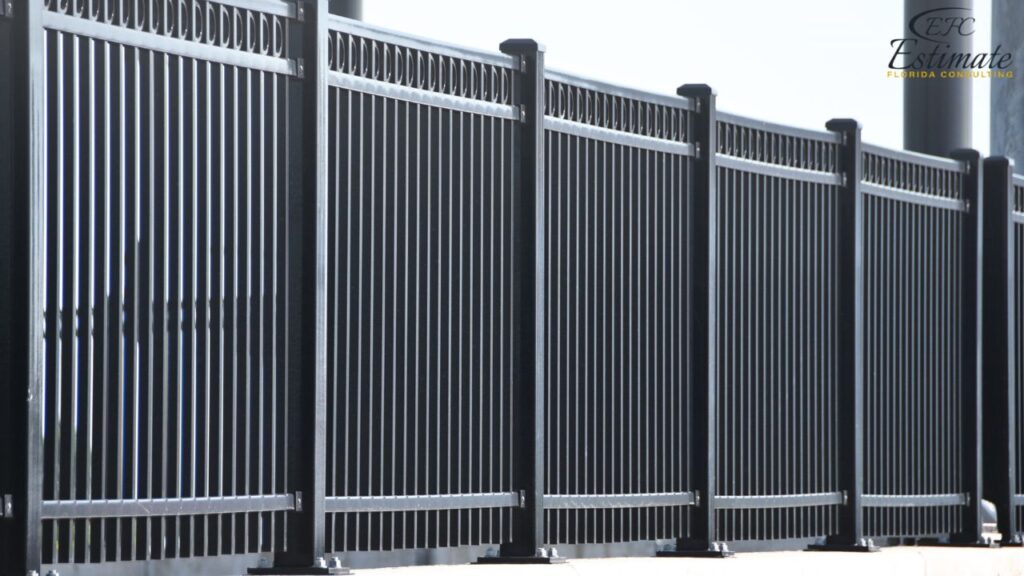
A well-planned fence installation not only boosts the value of your property but also provides long-term benefits in terms of maintenance and durability.
Factors Influencing Fence Costs
Several factors influence the cost of installing a fence. These include the type of material used, the length and height of the fence, labor costs, location, and additional features such as gates or decorative elements. Understanding these factors helps in estimating the total cost accurately and planning the project efficiently. Each factor plays a crucial role in determining the overall budget, and careful consideration of these aspects can lead to more effective resource allocation and project management. By thoroughly analyzing these elements, project managers can anticipate potential challenges and develop strategies to mitigate them, ensuring a smoother installation process. Additionally, understanding these factors allows homeowners to make informed decisions that balance their aesthetic preferences with practical and budgetary constraints.
Type of Material Used
The type of material used for the fence significantly impacts the overall cost. Different materials offer varying levels of durability, maintenance requirements, and aesthetic appeal. Choosing the right material depends on your specific needs and budget. High-quality materials might have a higher initial cost but can offer better longevity and lower maintenance costs over time. Conversely, more affordable materials might save money upfront but could incur higher maintenance costs or need replacement sooner.
The choice of material significantly impacts fence installation costs.
Material Type | Cost per Linear Foot | Total Cost (for 100 feet) |
Wood | $21 – $42 | $2,100 – $4,200 |
Vinyl | $28 – $56 | $2,800 – $5,600 |
Aluminum | $35 – $70 | $3,500 – $7,000 |
Wrought Iron | $42 – $84 | $4,200 – $8,400 |
Chain Link | $14 – $28 | $1,400 – $2,800 |
- Wood: $21 – $42 per linear foot. Wood fences are popular for their natural look and versatility. They can be stained or painted to match your home’s exterior and provide a classic appeal. Wood is available in various types, such as pine, cedar, and redwood, each with different durability and aesthetic qualities.
- Vinyl: $28 – $56 per linear foot. Vinyl fences are durable, low-maintenance, and available in various styles and colors. They resist rot and pests, making them a long-lasting option. Vinyl is also easy to clean and does not require painting or staining, which can save on maintenance costs over time.
- Aluminum: $35 – $70 per linear foot. Aluminum fences are lightweight, durable, and rust-resistant. They are ideal for decorative purposes and offer a sleek, modern look. Aluminum is also easy to install and can be designed to mimic the appearance of more expensive materials, such as wrought iron.
- Wrought Iron: $42 – $84 per linear foot. Wrought iron fences are strong and durable, offering a high level of security. They are often used for their ornamental value and classic appearance. Wrought iron requires regular maintenance to prevent rust and preserve its appearance, which can add to the long-term cost.
- Chain Link: $14 – $28 per linear foot. Chain link fences are cost-effective and durable, commonly used for security purposes and boundary delineation. They offer limited privacy but can be combined with privacy slats or fabric to enhance their functionality. Chain link is also low-maintenance and can last for many years with minimal upkeep.
Length and Height of the Fence
The length and height of the fence are crucial factors in determining the overall cost. Longer and taller fences require more materials and labor, increasing the total expense. Accurate measurements and planning are essential to ensure you purchase the right amount of materials and avoid wastage. Additionally, the height of the fence may be regulated by local zoning laws, which should be considered during the planning phase.
The length and height of the fence are critical factors in determining the overall cost.
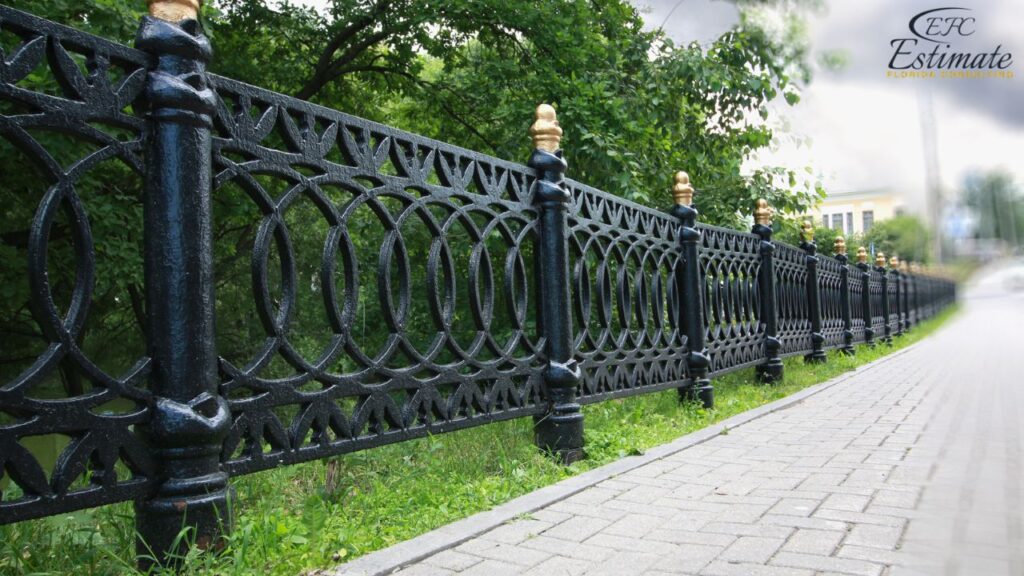
Fence Dimension | Cost Range |
50-foot Fence | $1,050 – $4,200 |
100-foot Fence | $2,100 – $8,400 |
150-foot Fence | $3,150 – $12,600 |
4-foot Height | Standard Cost |
6-foot Height | +20% |
8-foot Height | +40% |
- Length: A longer fence will naturally cost more due to the additional materials required. For example, a 100-foot fence will cost more than a 50-foot fence. The length of the fence should be determined by the specific needs of the property, such as enclosing a backyard, creating a secure perimeter, or dividing property lines.
- Height: Taller fences provide more privacy and security but require more materials and support. Common heights for residential fences range from 4 to 8 feet. Taller fences might also need additional structural support, such as stronger posts and more robust foundations, to ensure stability and durability.
Labor Costs
Labor costs vary based on the complexity of the installation and the location. Skilled labor is essential for ensuring quality installation, and wages can differ significantly from one region to another. Investing in skilled labor can prevent costly mistakes and rework, ensuring the fence is installed to the highest standards. Experienced installers can also offer valuable advice on the best materials and techniques for your specific project, potentially saving time and money in the long run.
Labor costs vary based on the complexity of the installation and the location.
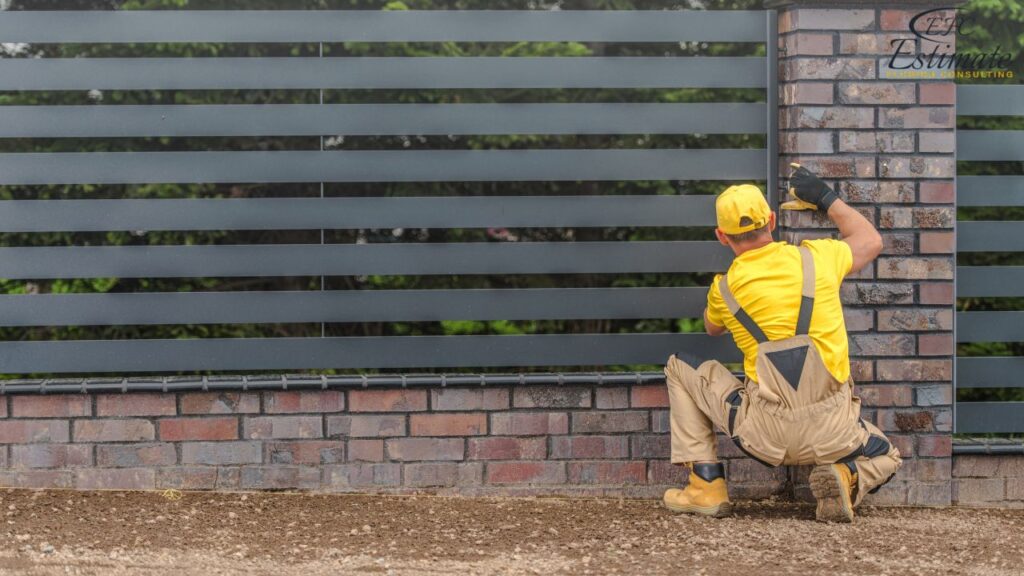
Labor Type | Cost per Hour | Total Cost (for 40 hours) |
Unskilled Labor | $35 – $56 | $1,400 – $2,240 |
Skilled Labor | $70 – $105 | $2,800 – $4,200 |
Total | $35 – $105 | $4,200 – $6,440 |
- Unskilled Labor: $35 – $56 per hour. Unskilled labor is used for basic tasks such as digging post holes and transporting materials. While these tasks do not require specialized skills, they are essential for preparing the site and ensuring the fence is properly installed.
- Skilled Labor: $70 – $105 per hour. Skilled labor is necessary for tasks that require specific expertise, such as precise measurements, alignment, and securing fence panels. Skilled labor ensures that the fence is installed correctly, preventing issues such as uneven panels or weak points that could compromise the fence’s integrity.
Location
The location of the property affects costs due to variations in labor rates and local regulations. Urban areas typically have higher costs compared to suburban or rural locations. The availability of resources and proximity to suppliers also play a role in determining location-based costs. Understanding the impact of location on costs helps in planning and budgeting more effectively. Additionally, local climate conditions can influence the choice of materials and installation techniques, further affecting costs.
- Urban Areas: Higher labor costs and more stringent regulations. Urban installation projects benefit from easy access to amenities and services but come with higher overall expenses. The increased demand for skilled labor and premium materials in urban areas drives up costs.
- Suburban Areas: Moderate costs, balanced access to materials and labor. Suburban areas offer a compromise between cost and convenience, making them a popular choice for many projects. These areas typically have lower regulatory hurdles and labor costs compared to urban centers.
- Rural Areas: Lower costs, but potentially higher transportation expenses for materials. Rural projects can be more cost-effective, but logistical challenges may increase certain expenses. The distance from suppliers and the availability of skilled labor can affect overall project costs.
Download Template For Fence Project Breakdown
- Materials list updated to the zip code
- Fast delivery
- Data base of general contractors and sub-contractors
- Local estimators

Additional Features
Additional features such as gates, decorative elements, or special finishes can increase the overall cost of the fence. These features add functionality and aesthetic value but require careful planning and budgeting. While additional features can enhance the appeal and utility of the fence, they can also significantly increase the complexity and cost of the installation.
Additional features can significantly impact the overall cost of the fence.
Feature | Cost Range |
Gates | $210 – $1,400 each |
Decorative Elements | $7 – $28 per linear foot |
Special Finishes | $3 – $7 per linear foot |
- Gates: $210 – $1,400 each. The cost of gates varies based on size, material, and design. Simple pedestrian gates cost less, while larger driveway gates with automatic openers can be more expensive. Gates add convenience and accessibility to the fence but require proper installation to ensure security and functionality.
- Decorative Elements: $7 – $28 per linear foot. Decorative elements such as lattice tops, post caps, and finials add aesthetic appeal to the fence but increase the overall cost. These elements can be customized to match the style of the property and enhance the fence’s visual impact.
- Special Finishes: $3 – $7 per linear foot. Special finishes such as staining, painting, or powder coating protect the fence and enhance its appearance, adding to the overall expense. These finishes can also improve the fence’s durability by protecting it from the elements, reducing maintenance costs over time.
Total Estimated Cost
Summarizing all the costs provides a comprehensive view of the total investment required for fence installation. This overall estimate allows stakeholders to plan their finances, secure necessary funding, and ensure that the project can proceed without financial interruptions.
Cost Category | Total Estimated Cost |
Material Type | $1,400 – $8,400 |
Length and Height | $1,050 – $12,600 |
Labor Costs | $4,200 – $6,440 |
Additional Features | $210 – $1,400+ |
Total | $6,860 – $28,840+ |
Additional Considerations
Environmental Impact
Sustainable practices and eco-friendly materials can reduce the environmental impact of fence installation. Although these choices may come at a higher initial cost, they offer long-term savings through durability and reduced maintenance. Implementing green building certifications can also increase the property’s value and appeal to environmentally conscious buyers. Choosing materials with low environmental impact, utilizing sustainable practices, and opting for eco-friendly finishes are all ways to enhance the sustainability of the fence installation. This approach not only benefits the environment but also contributes to a healthier living or working environment.
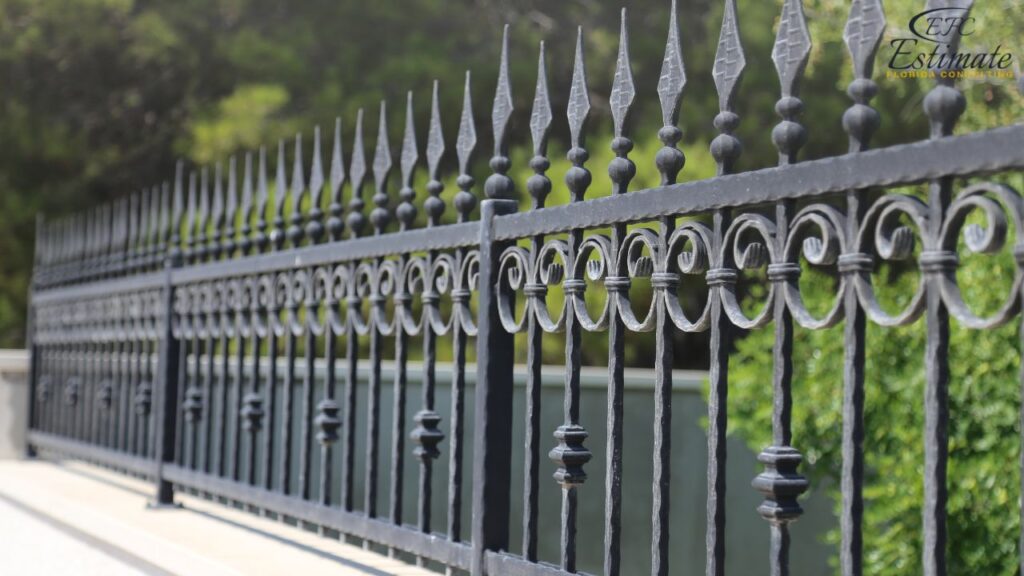
Project Management
Effective project management is essential for controlling costs and ensuring timely completion. This includes detailed planning, regular monitoring, and coordination between different teams. Hiring a competent project manager can save money by avoiding delays, reducing waste, and ensuring that all aspects of the project meet the required standards. A project manager also ensures that communication among all stakeholders is clear and efficient, helping to resolve issues quickly and maintain project momentum. Proper project management can prevent costly mistakes and rework, ensuring that the project is completed within budget and on schedule.
Contingency Planning
Unexpected issues can arise during fence installation, making it essential to include a contingency fund in the budget. This fund covers unforeseen expenses such as delays, design changes, or additional materials. Allocating around 10-15% of the total budget for contingencies can help manage these surprises and keep the project on track. Proper contingency planning ensures that the project can continue smoothly even when unexpected challenges arise, minimizing delays and additional costs. This proactive approach to risk management can save significant time and money in the long run, ensuring a successful project outcome.
Get 5 New Leads Next 7Days With Our System
- Multi-Family Building
- Hotel Building
- Hospital Building
- Warehouse Building
- High-Rise Building
- Shopping Complex
Conclusion
Estimating fence installation costs accurately is vital for the success of any construction or renovation project. By understanding the various factors that influence costs and using a detailed cost estimator, you can plan your project effectively and ensure it stays within budget. Whether you are undertaking a residential, commercial, or industrial project, careful planning and budgeting are key to achieving high-quality, timely, and cost-effective results. Investing in skilled professionals, quality materials, and effective project management will help you achieve a successful and sustainable fence installation. The effort put into pre-construction planning lays a strong foundation for the entire project, leading to better outcomes and greater satisfaction for all stakeholders.
FAQs
Fence cost estimation involves calculating the costs associated with installing a fence on your property. This includes costs for materials, labor, permits, and additional features like gates and decorative elements.
Accurate fence cost estimation helps set realistic budgets, secure financing, and ensure the project stays within budget. It also prevents unexpected expenses and ensures the project proceeds smoothly and on time.
Several factors influence the cost, including:
- Type of material used
- Length and height of the fence
- Labor costs
- Location of the project
- Additional features such as gates or decorative elements
Different materials offer varying levels of durability, maintenance requirements, and aesthetic appeal. Choosing the right material depends on your specific needs and budget.
- Wood: $21 – $42 per linear foot
- Vinyl: $28 – $56 per linear foot
- Aluminum: $35 – $70 per linear foot
- Wrought Iron: $42 – $84 per linear foot
- Chain Link: $14 – $28 per linear foot
Longer and taller fences require more materials and labor, increasing the total expense. Accurate measurements and planning are essential to ensure you purchase the right amount of materials and avoid wastage.
- Length:
- 50-foot Fence: $1,050 – $4,200
- 100-foot Fence: $2,100 – $8,400
- 150-foot Fence: $3,150 – $12,600
- Height:
- 4-foot Height: Standard cost
- 6-foot Height: +20%
- 8-foot Height: +40%
Labor costs vary based on the complexity of the installation and location. Skilled labor ensures quality installation and can prevent costly mistakes and rework.
- Unskilled Labor: $35 – $56 per hour; $1,400 – $2,240 for 40 hours
- Skilled Labor: $70 – $105 per hour; $2,800 – $4,200 for 40 hours
Urban areas typically have higher costs due to higher labor rates and stricter regulations. Suburban and rural areas may have lower costs but could face logistical challenges.
Features such as gates, decorative elements, or special finishes increase the overall cost of the fence but add functionality and aesthetic value.
- Gates: $210 – $1,400 each
- Decorative Elements: $7 – $28 per linear foot
- Special Finishes: $3 – $7 per linear foot
- Material Type: $1,400 – $8,400
- Length and Height: $1,050 – $12,600
- Labor Costs: $4,200 – $6,440
- Additional Features: $210 – $1,400+
- Total: $6,860 – $28,840+
Sustainable practices and eco-friendly materials can reduce the environmental impact and offer long-term savings through durability and reduced maintenance.
Effective project management controls costs and ensures timely completion by detailed planning, regular monitoring, and coordination between teams.
Unexpected issues can arise during installation, so including a contingency fund in the budget helps cover unforeseen expenses and keeps the project on track.
Skilled professionals ensure the fence is installed correctly, preventing issues like uneven panels or weak points. They also offer valuable advice on materials and techniques, potentially saving time and money.
High-quality materials offer better longevity and lower maintenance costs over time, ensuring the fence remains durable and visually appealing.
Google Reviews

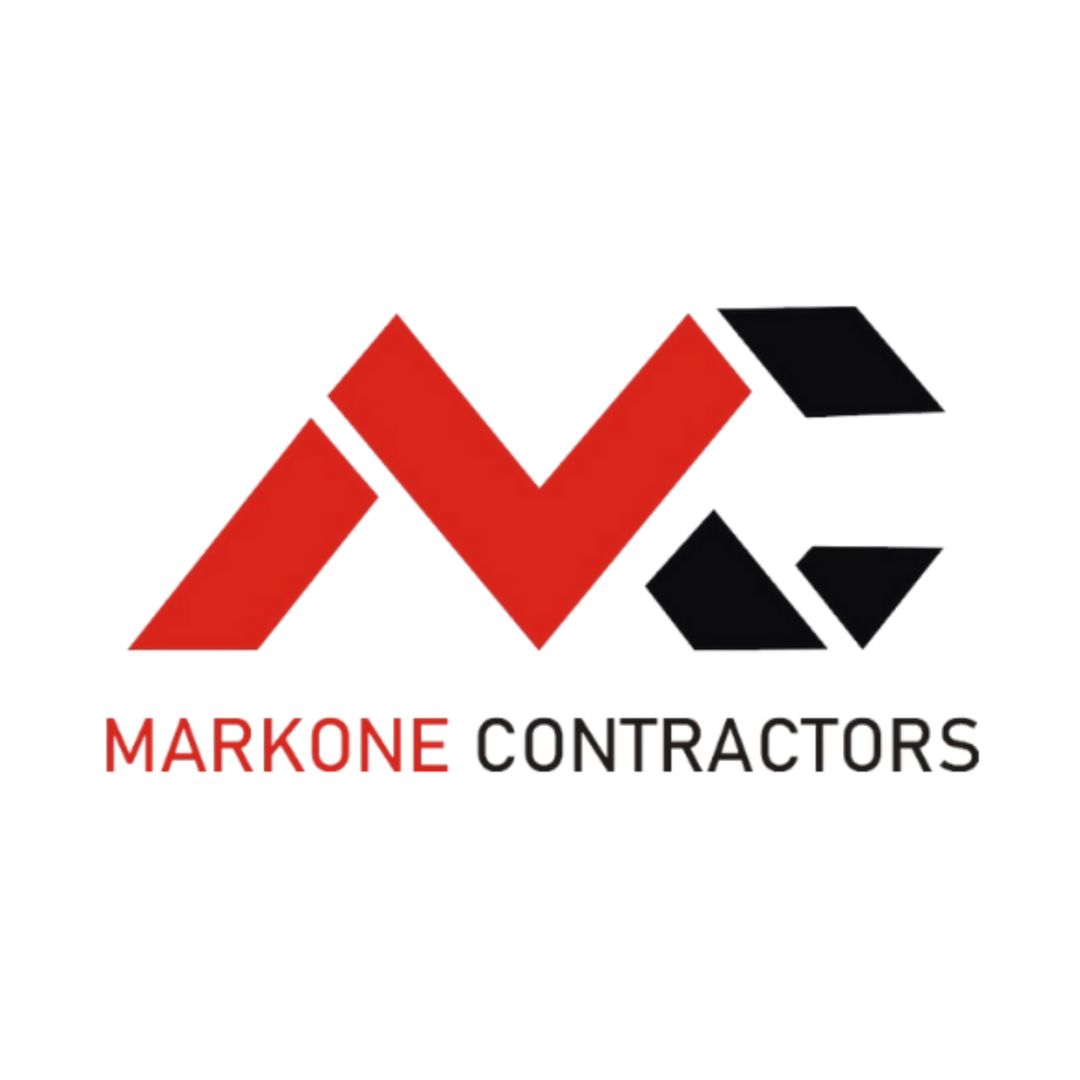

Process To Get Fence Cost Estimate Report
Here I am going to share some steps to get fence cost estimate report.
-
You need to send your plan to us.
You can send us your plan on info@estimatorflorida.com
-
You receive a quote for your project.
Before starting your project, we send you a quote for your service. That quote will have detailed information about your project. Here you will get information about the size, difficulty, complexity and bid date when determining pricing.
-
Get Estimate Report
Our team will takeoff and estimate your project. When we deliver you’ll receive a PDF and an Excel file of your estimate. We can also offer construction lead generation services for the jobs you’d like to pursue further.

